"Embroidered Ceremonial Equine Saddle"
Among art or war, chivalry is a must when it comes to knowing horse riding and chivalry. In medieval Europe, a man who loudly held the title of knight began his career as a page and after proving his skills could receive the title of squire. A squire was the knight's right-hand man and had to prove himself in battle and be able to provide the knight with things needed, such as caring for the horses and carrying the knight's shield. In case of high rank, a noble would have paid a knight to be his squire. Later, after the medieval period, until the 19th century, chivalry was only ceremonial since the battlefields had changed significantly since the invention of gunpowder and firearms. During ceremonies, the nobles still had squires at their side who were equipped on an equal basis with their lords. A fine example of this tradition is listed here. A squire's parade saddle, dating from the end of the 18th century, originating in Europe, either from France, Spain or Italy. It has a wooden frame with leather billets, covered in silk and velvet. The esophagus and cantle are covered in purple velvet with small brass studs. The seat and jockey seat are decorated with fine embroidered threads. The panels, which make the sale comfortable for the horse, are padded with straw and have cotton contours.
Conclusion: A beautiful piece of antique equestrian equipment. Rarely seen on the market today. The saddle has an interesting historical context and has been fairly well maintained.
Condition: Good condition, the velvet has discolored due to atmospheric influences. The silk is worn in some places, although in good condition. Dimensions: Length: 34 cm Width: 40 cm Height: 32 cm


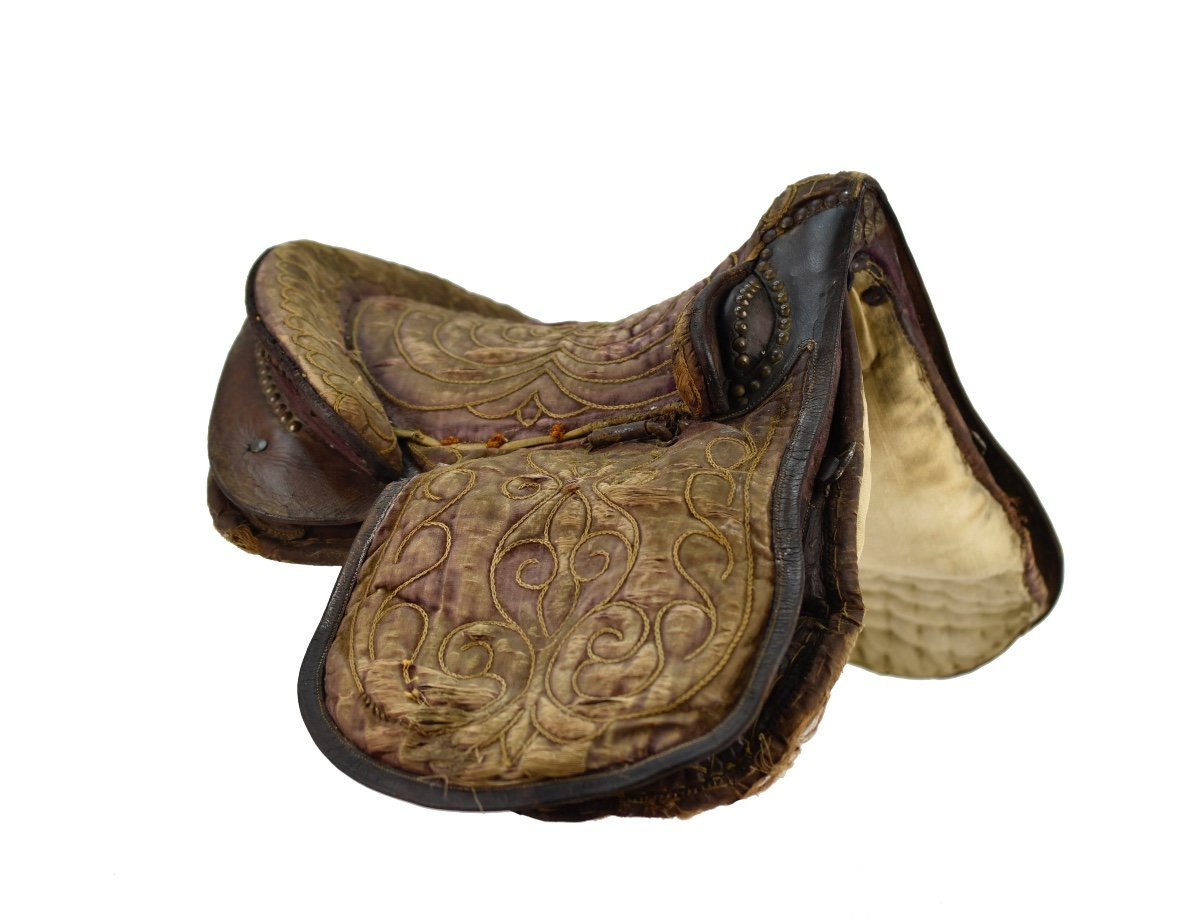
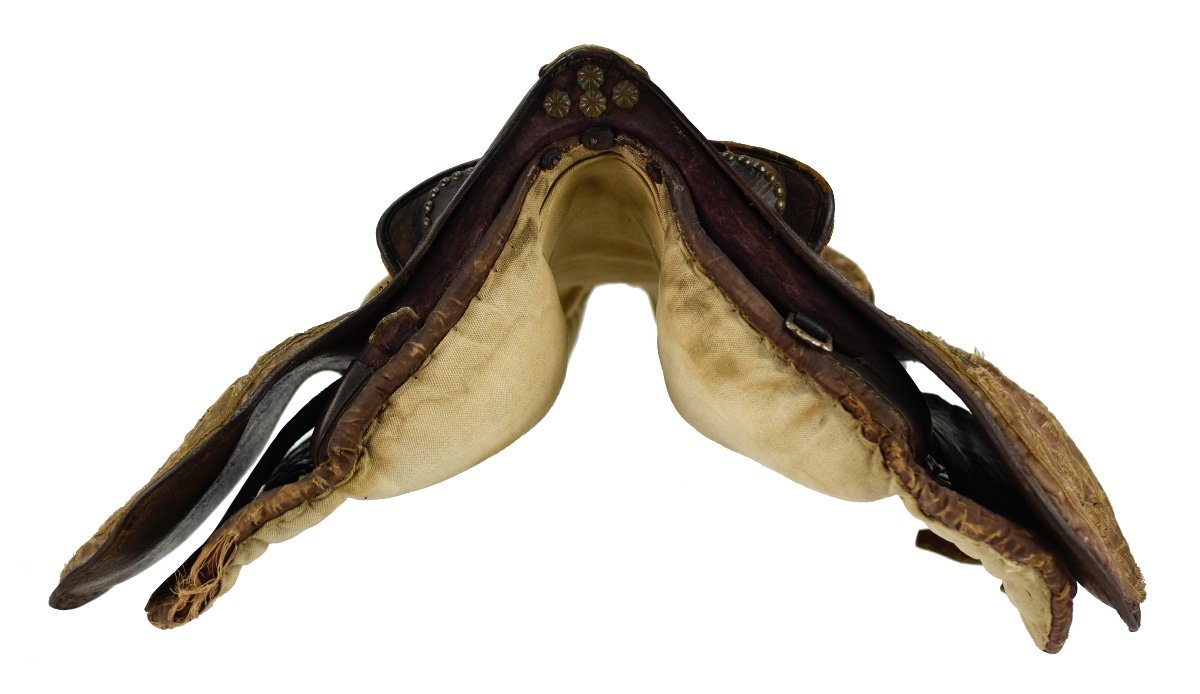
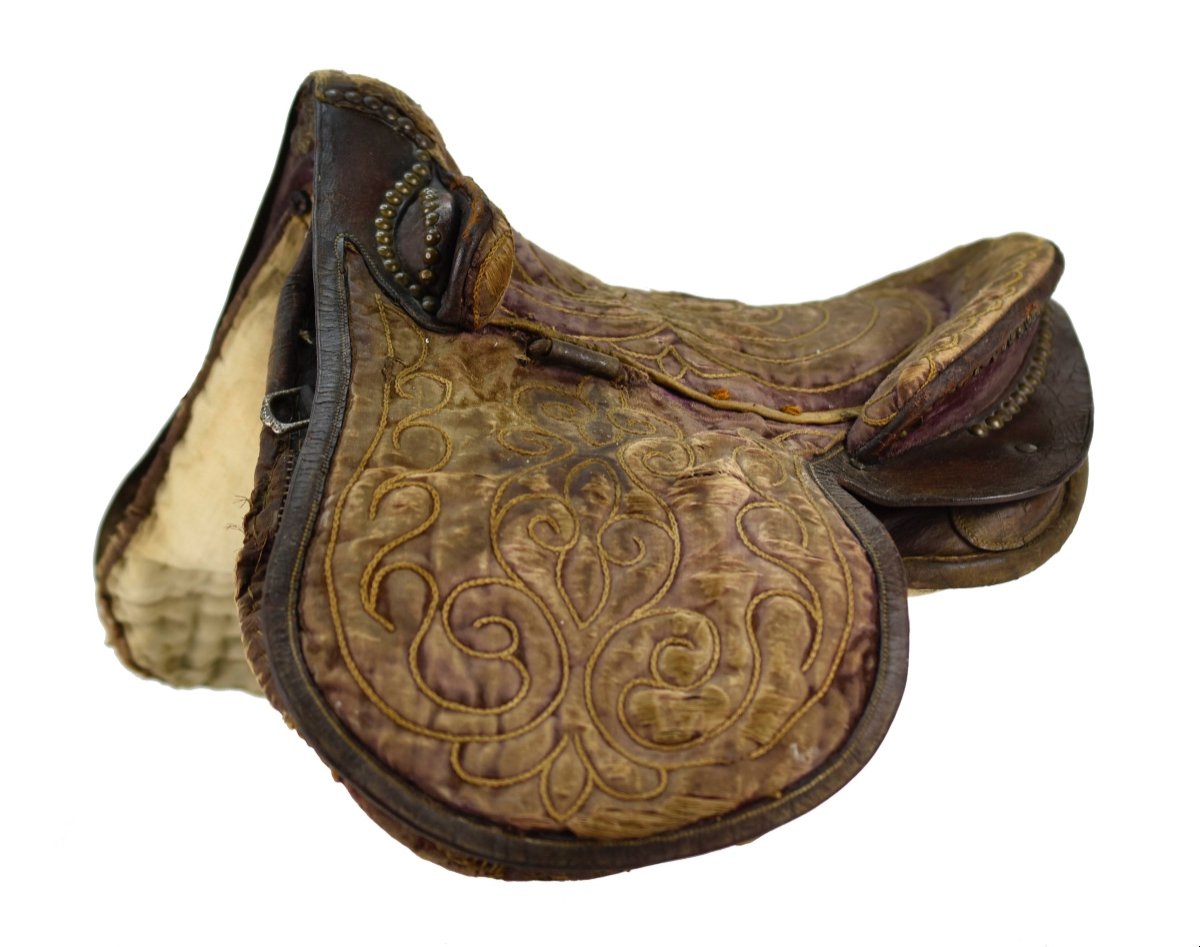
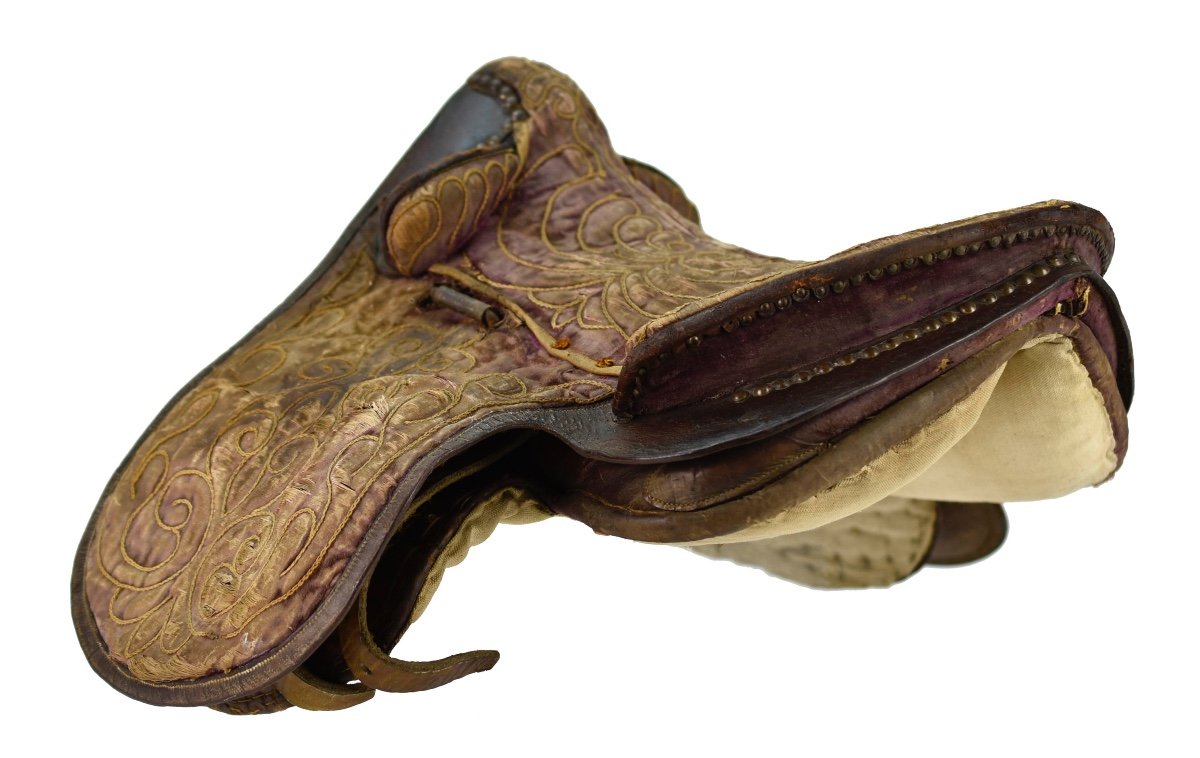
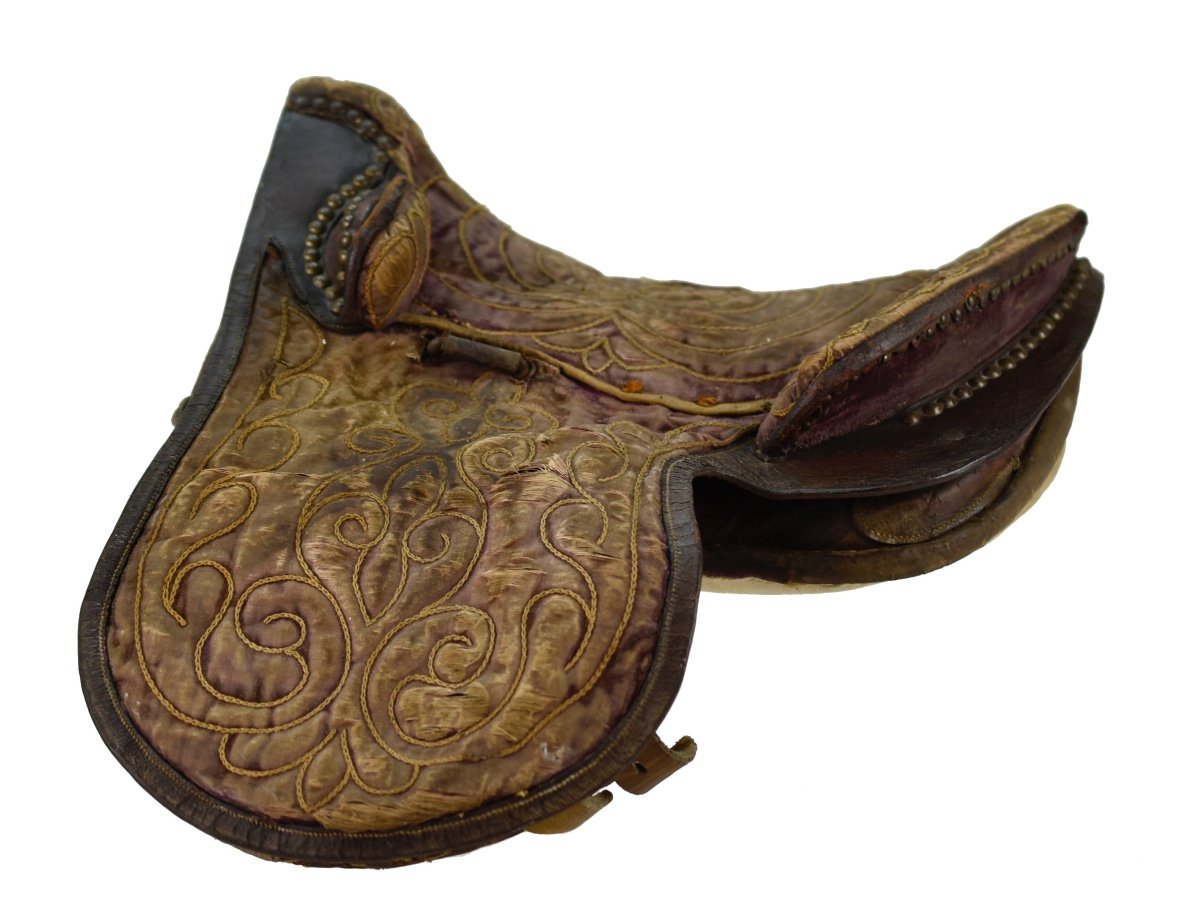
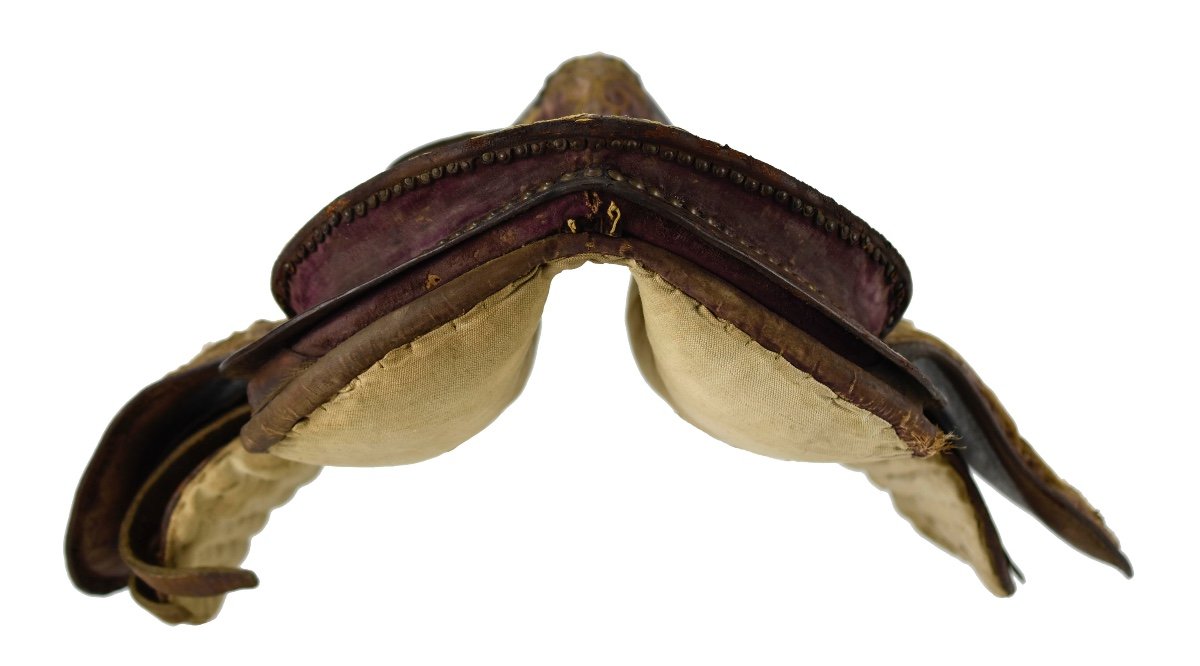
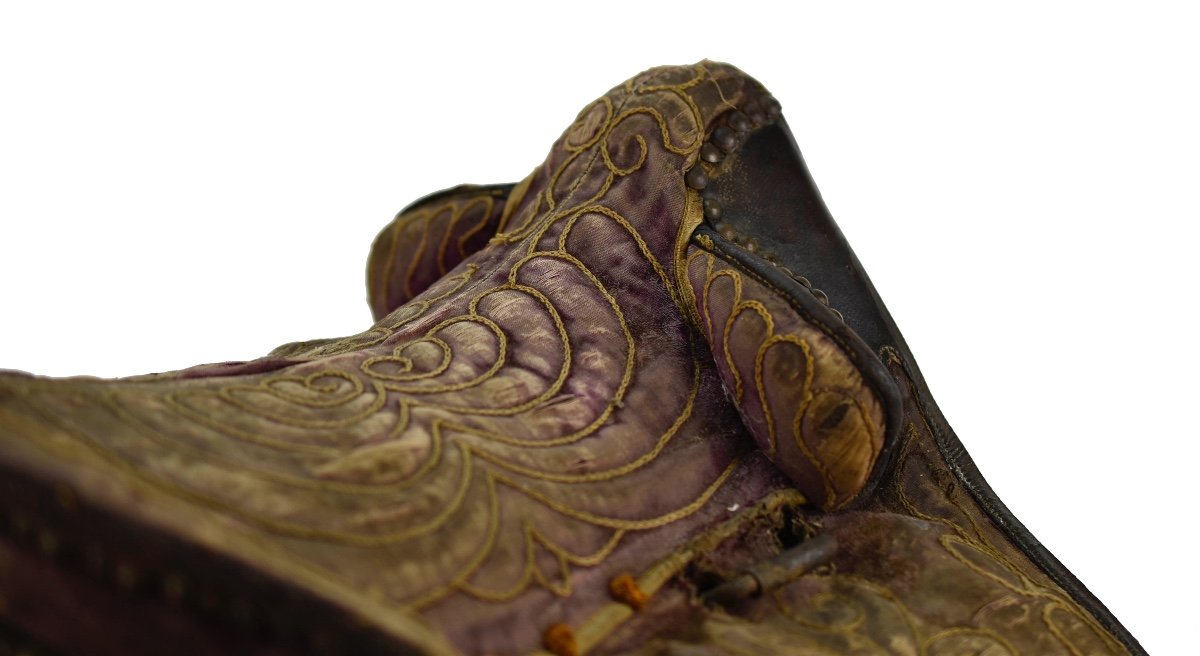
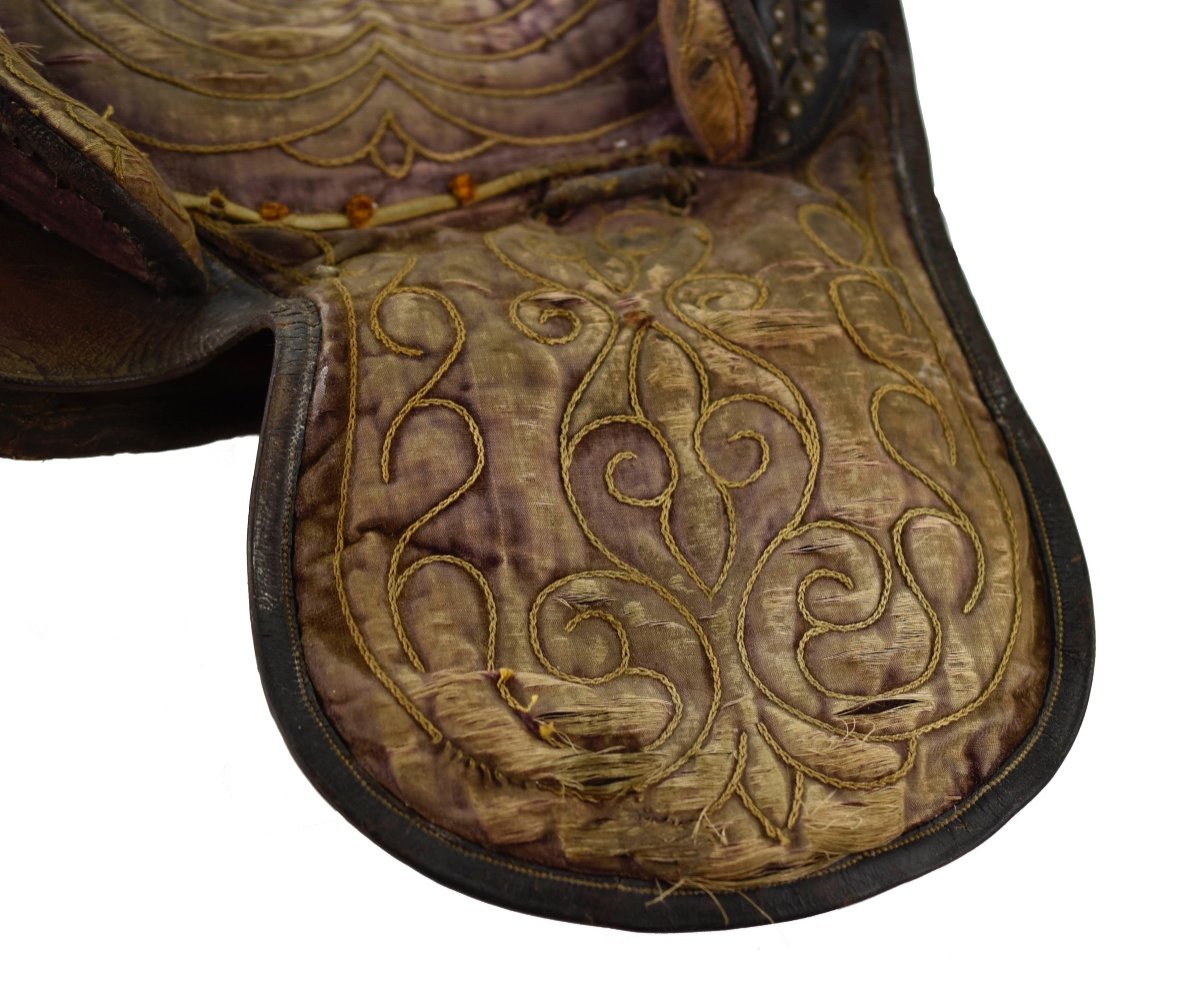
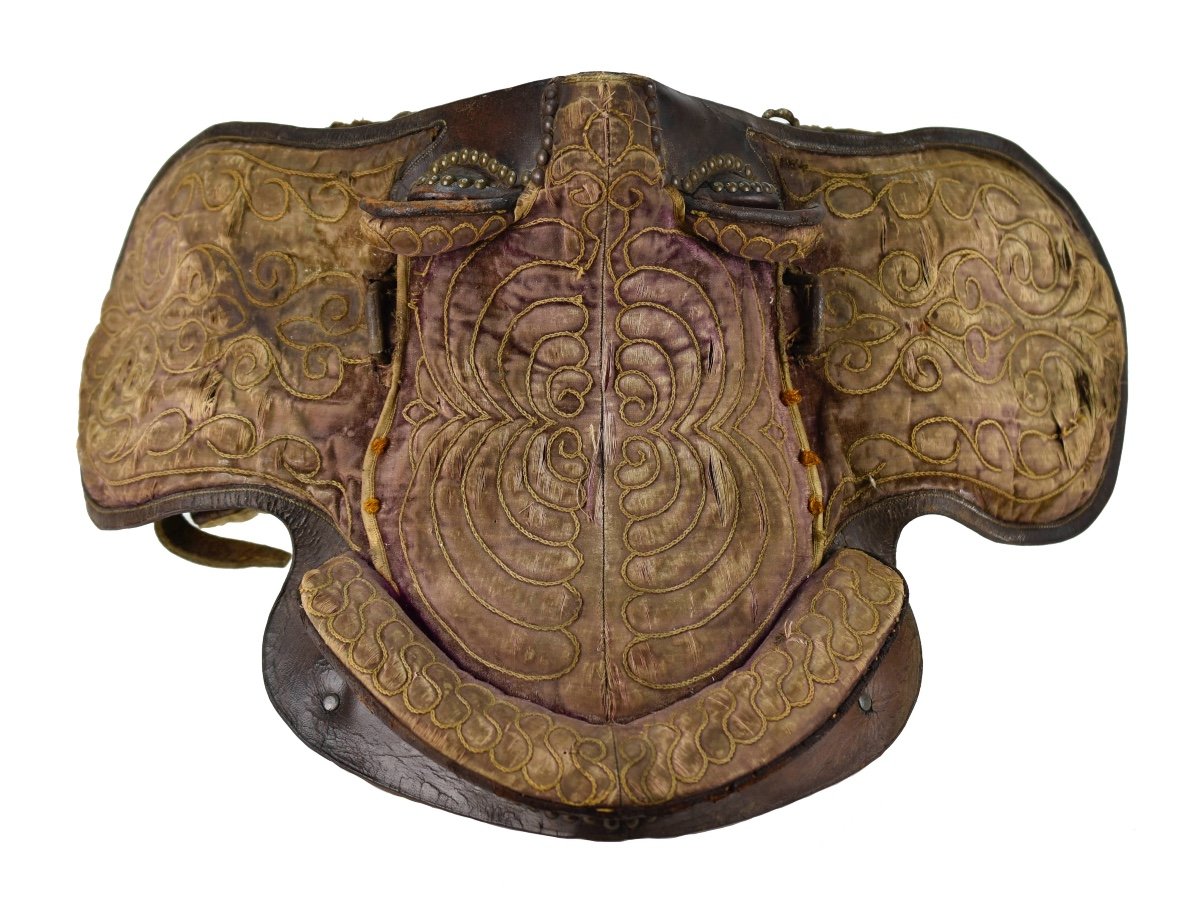
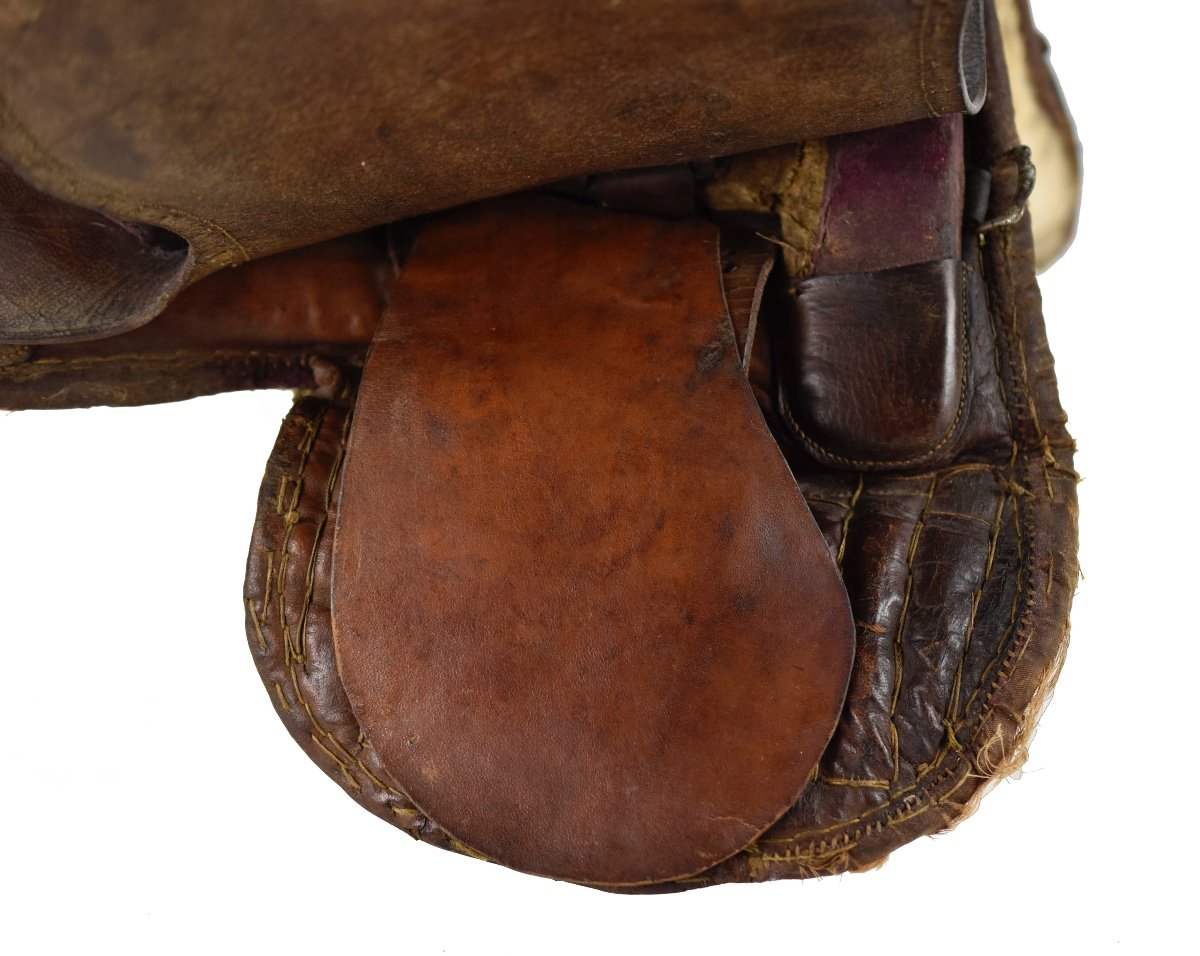
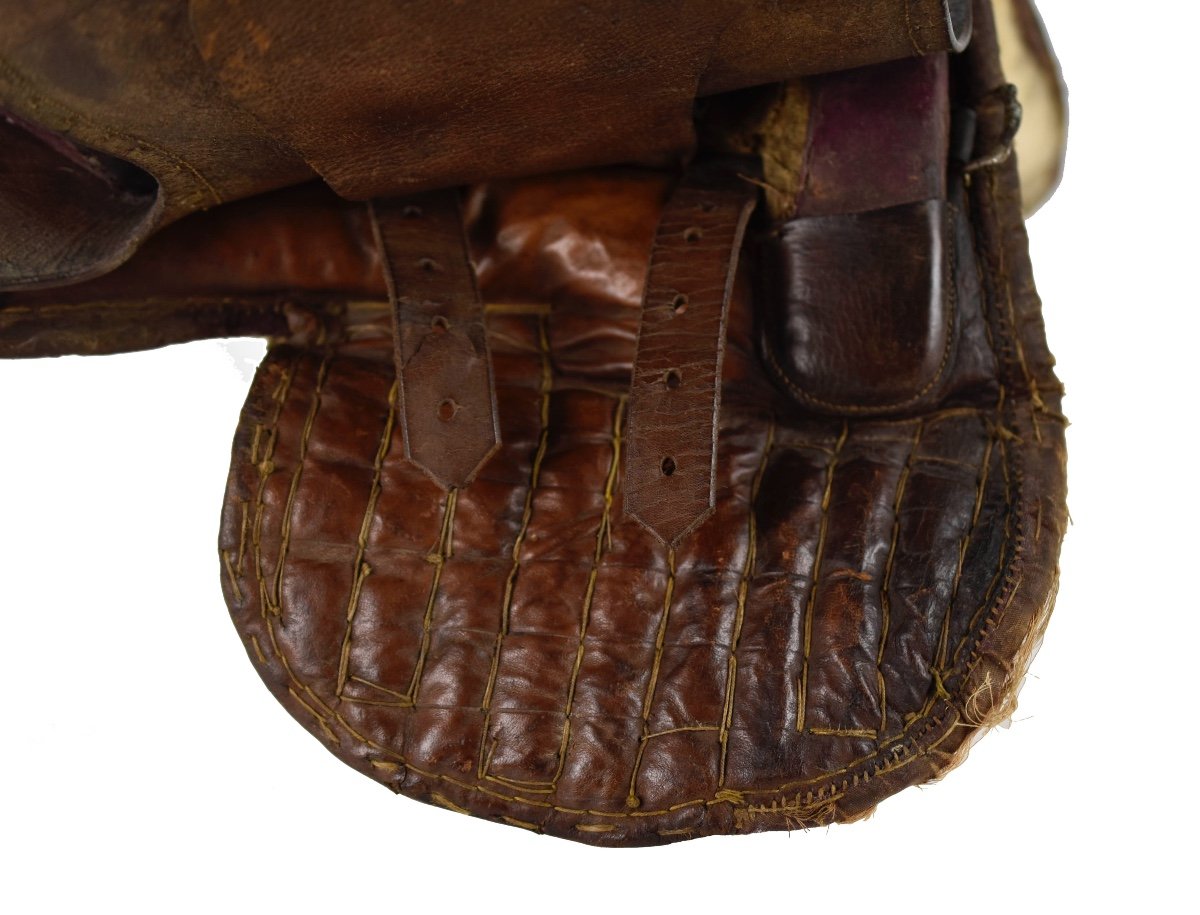
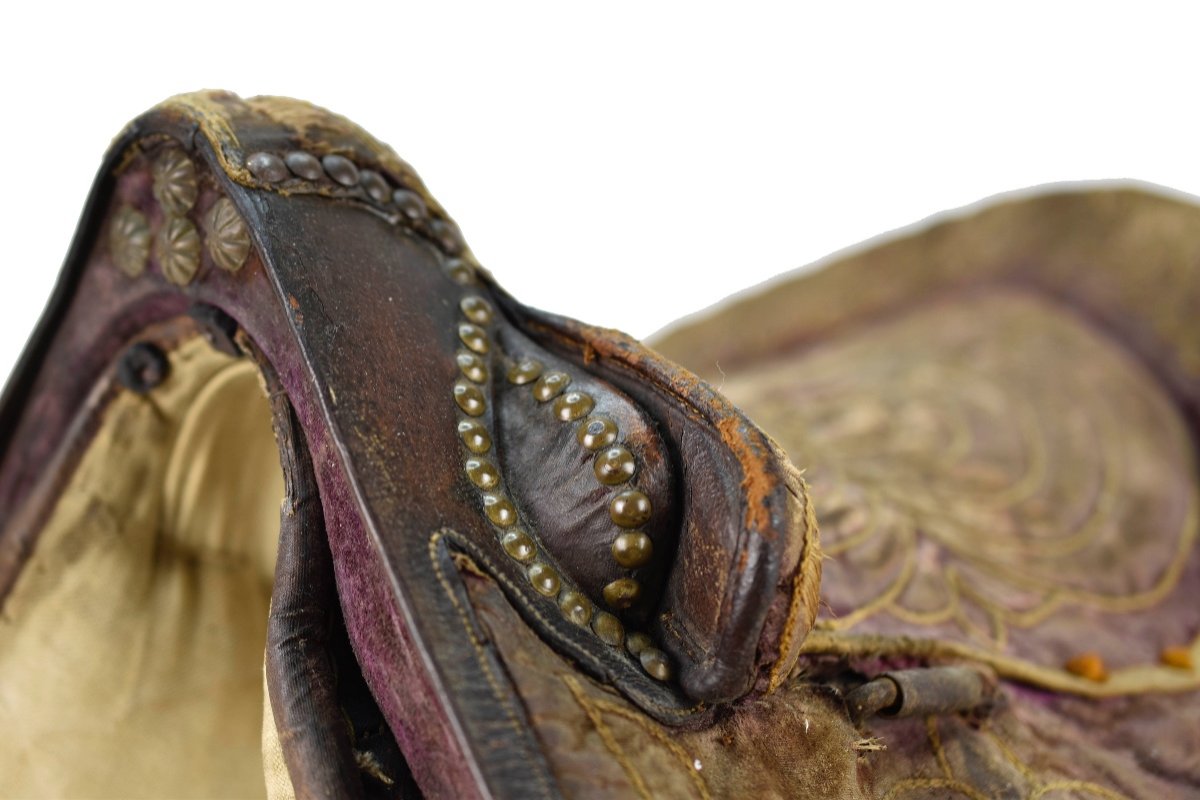

















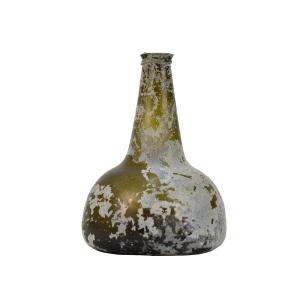

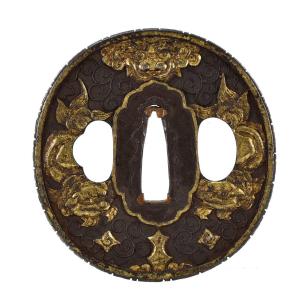

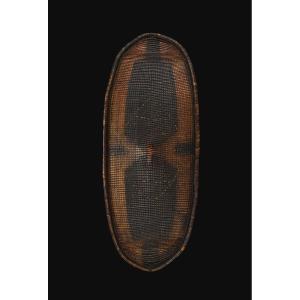

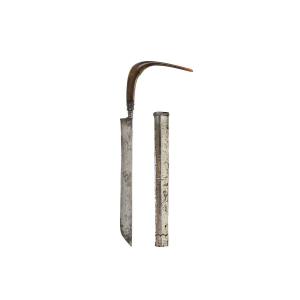
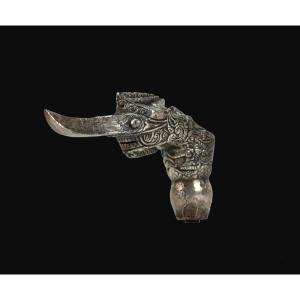
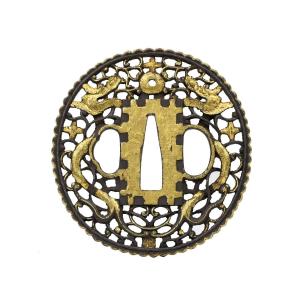

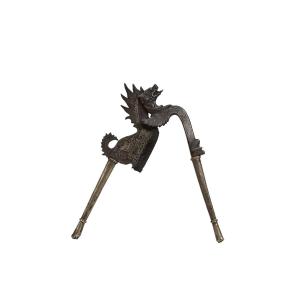

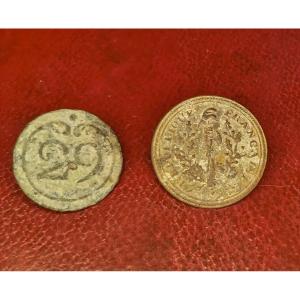
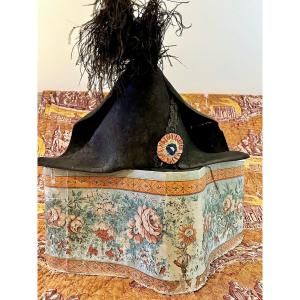




 Le Magazine de PROANTIC
Le Magazine de PROANTIC TRÉSORS Magazine
TRÉSORS Magazine Rivista Artiquariato
Rivista Artiquariato